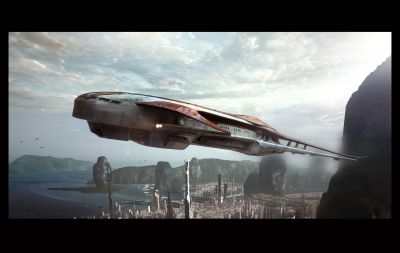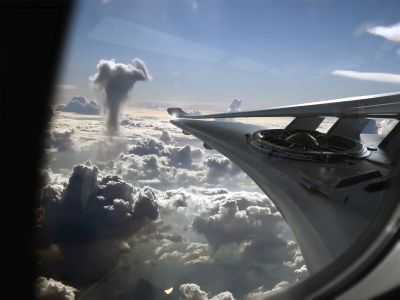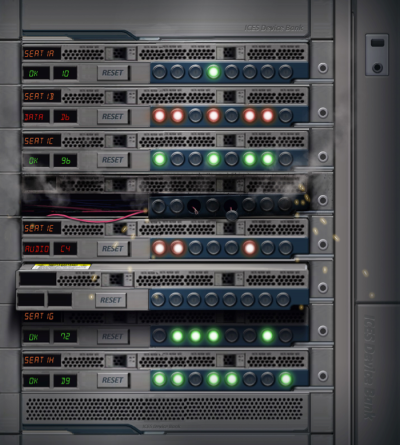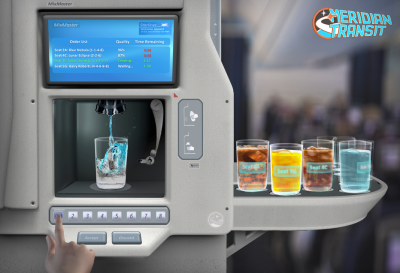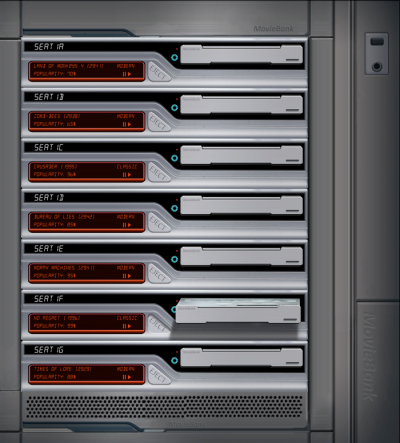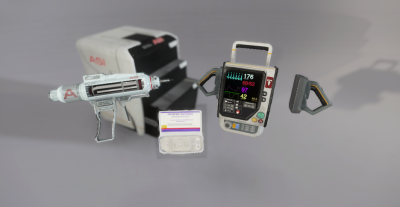折叠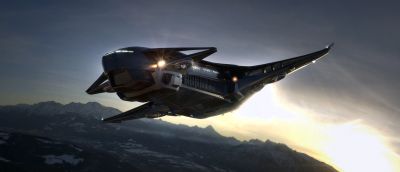 | |||||||||||||||||||||||||||||||||||||||
| 系列 | Design | ||||||||||||||||||||||||||||||||||||||
|---|---|---|---|---|---|---|---|---|---|---|---|---|---|---|---|---|---|---|---|---|---|---|---|---|---|---|---|---|---|---|---|---|---|---|---|---|---|---|---|
| 类型 | Transmission | ||||||||||||||||||||||||||||||||||||||
| ID | 14804 | ||||||||||||||||||||||||||||||||||||||
| 发布日期 | 2015-06-27 | ||||||||||||||||||||||||||||||||||||||
| 来源 | Civilian Passenger Transport | ||||||||||||||||||||||||||||||||||||||
| 系列文章 | |||||||||||||||||||||||||||||||||||||||
| |||||||||||||||||||||||||||||||||||||||
Sic itur ad astra.
by Tony Zurovec, Director, 持续性宇宙
"MOST PEOPLE FOCUS ON WHERE THEY WANT TO BE. WE’RE THE ONES THAT OBSESS ABOUT GETTING YOU THERE."
星际公民’s Civilian Passenger Transport is one of the more unique occupational roles that a player can assume. As with mining, discovery, repair, rescue, and scientific research the focus is not on combat. Instead, passenger transport is about competing with other players and characters in much more subtle and diverse ways for the right to provide a critical and necessary support service for the proper operation of the entire galactic ecosystem. Whereas other endeavors demand a player’s attention at key points throughout a mission, with passenger transport the journey is the mission.
STARTING A CAREER
Passenger Transport is a heavily regulated activity, and the first step in an aspiring transporter’s career is to obtain a license at the government offices of the various landing zones from which you wish to pick up or deliver passengers. If your criminal record is clear and you have no prior experience in the field this is a quick and painless process. A recurring fee for the license is required, with the amount dependent upon how much passenger traffic travels through that landing zone. Larger transports with fuel efficient engine upgrades and finely honed crews focus on those central traffic hubs, driving the ticket prices down to the point that a player will need considerable experience and an advanced ship in order to profitably compete. Smaller and first-time operators tend to therefore stick to those landing zones that don’t have as much passenger traffic. Those locales will take a bit longer to sell out a flight, there will be little demand for the long distance flights that are often the most profitable, and most of the travelers will only be interested in basic low-cost fares rather than cutting edge comfort. However, there will also be considerably less competition, and thus better profit margins for less experienced operators utilizing less efficient ships.
Passenger Transport requires a specialized type of ship such as the Starliner, which is being offered today in a concept sale. There are four classes of comfort – Coach, Business Class, First Class, and Luxury Class – but many ships support only one or two of these. Fuel capacity, consumable storage capacity, and engine efficiency are the primary determinants as to whether a given ship is classified as short or long range. The Starliner is the top of the line – a long range, Luxury Class transport ship equipped with a prodigious seating capacity, fuel efficient engines, an advanced quantum stabilizer to minimize occurrences of vibration-induced nausea, private sleeping cabins, and much more to remove all of the discomfort from an extended voyage.
Once a compatible ship and a license to operate have been obtained, a player need only park on a public landing pad and initiate a connection to the local Flight Schedule Computer in order to get a sense of passenger traffic at that location. Desired destinations are shown in order of popularity, with the number of passengers that have traveled to that locale over the last day and the average prices they paid for each ticket class available as a means of reference.
Players may select a destination for their flight, set the price for each ticket class that they offer, and specify a departure and estimated arrival time. The flight can then be published, at which point travelers can see the flight and begin to purchase tickets. Depending upon the amount of passenger traffic seeking to travel to that location, the prices that you set, your departure time and flight duration, the number of competing flights, and your reputation, travelers may begin to exit Customs and board your ship in a trickle or a flood.
The ship’s pilot receives real-time feedback as to how many tickets have been sold out of the available inventory, and may change the price of unsold tickets at any time. The pilot may terminate the ticket offering prematurely, but may not modify the departure or arrival times without cancelling the flight entirely, which would not be well received by those passengers that had already purchased a ticket. No additional tickets will be sold beyond the scheduled departure time.
The real work begins once the pilot has made the decision to depart, and continues non-stop until the passengers have been deposited at their desired destination.
REPUTATION
To transport another character is to have them place their trust in you, and as such your most important business asset is your reputation. Allow that to be sullied and it will be a long, hard road to regain the community’s trust and business. Reputation directly impacts two things: whether your license to operate is temporarily revoked or not, and how much of a discount you must suffer or premium you may enjoy when competing against others and offering an otherwise identical level of service.
Reputation is measured via how well travelers are being safely delivered to their destination, and the overall level of satisfaction of those players with the flight experience. While the former is very straightforward, the latter involves the evaluation of many different components.
Every passenger keeps track of their flight experience in a number of different ways, and their ticket class directly impacts how forgiving they are in their evaluation. While the higher fares that can be charged for First Class may seem very appealing, adequately dealing with the increased difficulty of satisfying a more demanding clientele will require much more than simply the one-time purchase of a ship offering the desired seating comfort and amenities. Travelers that purchase the higher tier seating classes expect superior service, higher quality food and drink, a greater selection of entertainment offerings, prompt medical treatment, and better access to shipboard facilities. How well these expectations are met will ultimately determine how a player’s reputation in the passenger transportation field evolves over time.
ICES
ICES – an acronym for Information, Communication, and Entertainment System – is the computer centerpiece of a passenger’s flight. It allows them to do things like order food and drinks and engage in various forms of entertainment. Every seat on a passenger transport flight is equipped with a holographic projector in the ceiling above and to the front that is tied to an ICES blade in the hardware room at the back of every ship. These devices will on occasion fail, and in such cases it is of paramount importance to quickly resolve the problem given how prominently it factors into a passenger’s enjoyment of a flight.
ICES blades may fail for a variety of reasons, and each requires a specific procedure to resolve. Burned out units are simply ejected and replaced with another, assuming that the player had the foresight to restock their ship prior to departure. Excessive radio interference may prevent a solid communications data link from being established, which can in turn be addressed via a player quickly matching a set of binary filters to a hexadecimal status code before the interfering frequency and offsetting status code change. Recalibration of a misaligned audio processor can be accomplished via pressing a sequence of eight buttons associated with musical notes to match a test melody whose length is dictated by the extent of the failure. Carefully soldering a loose connection – while ensuring that the main circuit board isn’t damaged in the process – can remedy contact failures.
THE MIXMASTER
One of the more common service requests is for a mixed drink. Passengers key in their order through ICES, which immediately transmits that information to the MixMaster associated with that particular section.
The MixMaster is connected to eight different beverages and has a rotating set of nozzles. Pressing one of the eight associated buttons causes the corresponding beverage to dispense until the button is released. Alongside the seat of the passenger that ordered the drink and the time remaining before a reputational penalty starts to accrue is the formula for the desired concoction. A formula such as 1-1-4-8 would indicate that two parts beverage 1, one part beverage 4, and one part beverage 8 are required. The quality of the drink – displayed on the MixMaster – is determined by how accurately the portions were allocated. If the player isn’t happy with the quality of the drink they can simply press a key to discard it and start anew, but ships carry a limited supply of beverages so this tactic should be used sparingly. Upon acceptance of a drink it is moved to a conveyor belt on the side. Thus, players can prepare multiple drinks in a row and then move to deliver them, or one player can mix the drinks and another can focus on getting them where they belong.
While a passenger in Coach would be fairly forgiving with regard to slow delivery times and a poor mixture quality, travelers in Business Class and up would expect much more, and repeatedly disappointing them would have an adverse effect on their opinion of the flight, and ultimately the player’s reputation.
CUSTOMIZATION AND UPGRADES
Passenger Transport ships support a considerable number of potential upgrades, including more fuel efficient engines, larger fuel tanks, additional storage space for consumables and spare parts, quantum stabilizers that can reduce the potential for inducing nausea in sensitive passengers when traveling at extreme rates of speed, and other things of a “more traditional” upgrade nature.
Many aspects of the customization process, however, are much more subtle in nature and will require more time and effort on the part of the player than simply opening their checkbook.
The MixMaster, for example, accesses an array of beverages to formulate its drinks, but the quality of each individual component is dependent upon its source. Restock your supplies at a city known more for industrial manufacturing than fine liquors and more discerning passengers will certainly notice – regardless of whether you portioned everything out perfectly – and take that into account when determining their overall level of satisfaction with your flight, which will in turn affect your reputation.
Go the extra mile and purchase your liquors at an obscure moon off the beaten path – which might take a bit longer, and cost a bit more – and you’ll find that it’s a bit easier to maintain a sterling reputation given how ecstatic your passengers will be at the high quality drinks you’re serving in flight.
Movies are even more distinctive. Every Passenger Transport has a MovieBank in its hardware room – next to the ICES blades – that can store a fixed number of movies and that makes them available to passengers via their ICES projector. Movies are classified as either classic or modern, and all have a popularity rating that denotes how attractive they are to travelers as an entertainment option. The popularity of a modern movie declines over time, so that reliance upon them means continually seeking out newer releases and updating your library. Classic movies retain their popularity in perpetuity, but finding one that’s extremely popular is much more difficult.
Passengers consider the total popularity value of a movie library – as well as the percentage of the flight for which they had access to it, as a malfunctioning ICES device can completely eradicate the benefits of a solid movie library – when calculating how pleased they were with the overall level of entertainment options on the flight.
MEDICAL DIAGNOSIS AND TREATMENT
One of the most challenging areas of passenger transport is in dealing with illness. There are a wide variety of potential maladies that may befall a passenger, and each has its own particular set of symptoms. Careful monitoring of a passenger’s behavior – to ascertain whether a cough is accompanied by severe chest pains and shortness of breath, whether a migraine is accompanied by an aversion to light, whether a sore neck is accompanied by itching – provide important clues as to the cause of the affliction. Because symptoms will only gradually reveal themselves over a period of time, the best players will need to become adept at keeping an eye on a suspect passenger or two while continuing to fulfill their other responsibilities. An onboard computer allows symptoms to be input and compatible illnesses to be identified, but faster diagnosis – by learning the tell-tale signs of at least the most common diseases – is imperative for those looking to achieve a superlative reputation by dealing with such situations as quickly as possible.
Every passenger transport ship is equipped with at least one medical supply cabinet that contains some basic diagnostic equipment that may be of use in determining the cause of some ailments. It also contains a number of different treatments, one of which will address or at least alleviate every illness that might be encountered. Care must be taken, however, as prescription of the wrong medicine to a passenger can make the situation worse or even cause death.
Illnesses may transmit their effects throughout a cabin via two basic mechanisms – Fear and Contagion. Fear represents the concern and worry that a healthy passenger near another that appears sick would experience, and its effects are directly proportional to the intensity of the visible symptoms. Fearful passengers will frequently turn and look towards the traveler that concerns them, and their experience will continue to impart a penalty to the ship owner’s reputation for as long as the situation persists. Contagion, on the other hand, represents the actual spread of the disease, and is only applicable to some maladies. Slow or incorrect diagnosis of a serious issue can quickly spiral out of control, creating a cabin full of concerned passengers or, worse, a full blown epidemic that would result in a player’s passenger transport license being suspended for a period of time.
FLIGHT ATTENDANTS
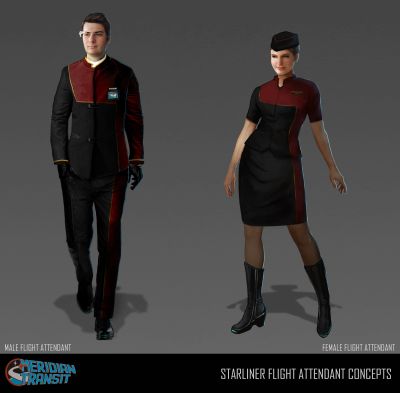
Passenger Transport ships come in a wide variety of configurations, with the two primary differentiating factors being the ticket classes supported and the number of seats. A single experienced player can likely handle a ship with 20-30 seats by themselves, but if they want to graduate to the larger and more efficient ships that dominate the busiest and most profitable routes they’re going to need some help if they wish to keep their reputation intact. Towards this end, players may always invite their friends along on a flight to assist, deciding amongst themselves how best to split up the various responsibilities.
At some point, though, most players will seek to supplement their operation with one or more non-player characters, if only to allow the player to focus on those tasks that they find most interesting or where they truly excel. This can be done via traveling to one of the recruiting stations that populate larger cities. These businesses contain profile information on a large number of job applicants and can sort their personnel database according to the desired job. Every applicant has their own unique mix of skills and knowledge, with the more capable stewards and stewardesses commanding a higher monthly wage.
Once hired, a flight attendant remains in the employ – and on the payroll – of a player until they are dismissed. They remain constrained to the city in which they were hired until transported elsewhere by the player, and can be summoned to a player’s ship at any time prior to departure. They can be directed to focus on only a particular part of a ship, and if so desired to only focus on certain aspects of the job. Once assigned to an area, they automatically begin moving to address the demands of passengers.
TOUCHING DOWN
Upon arrival at the intended destination the pilot must give passengers an all-clear signal from the cockpit in order for them to begin exiting the ship. Immediately upon departing each passenger will determine how satisfied they were with the overall trip and therefore how the reputation of the ship’s owner should be affected.
A pilot may force passengers off of their ship prematurely – at any public landing zone – but in such cases passengers will ignore any experience that they had while on board and instead contribute the lowest possible satisfaction rating. For larger transports one or two premature ejections can easily cause a license to be suspended.
Once all of the passengers have exited the ship, the pilot is free to submit a new flight plan to the Flight Schedule Computer. That system also allows for basic transport supplies – food, beverages, medicine, surplus ICES units, etc. – to be purchased and loaded into your hull while you wait on the tarmac.
Within minutes of touching down, then, you can again be prepped for departure. That’s life as a Passenger Transporter – always in motion.


